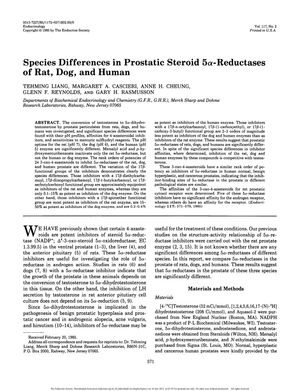Species Differences in Prostatic Steroid 5α-Reductases of Rat, Dog, and Human
August 1985
in “
Endocrinology
”

TLDR Different animals have unique versions of the enzyme that changes testosterone into another hormone, which is important for creating effective treatments for prostate and hair loss conditions.
The 1985 study examined the enzyme 5α-reductase, which converts testosterone to 5α-dihydrotestosterone, across rat, dog, and human prostates, revealing significant species differences. Human enzymes had an optimal pH of 5, while rat and dog enzymes had pH optima of 7 and 6, respectively. The study found that the binding sites for inhibitors in the prostate were similar across different pathological states in humans. Inhibitors varied in potency across species, with some showing no significant affinity for the androgen receptor. The study concluded that there are structural differences in 5α-reductases among species, which is crucial for developing treatments for conditions like benign prostatic hyperplasia, prostatic cancer, and androgenic alopecia. It also highlighted the importance of considering these differences when using animal models to predict human responses to 5α-reductase inhibitors.